► The 70s concept driven in 2020
► Replaces Wankel with V8
► Estimated £5million value
Following the reveal of the Mercedes Vision-One Eleven concept car, CAR looks back to the time we drove the car on which it was based; the legendary C111. Read our full drive of the car, taken from our September 2020 issue below.
Some context
Officially the C111 was always an experimental car; a rolling test bed for new materials, new shapes and new components. But you don’t need to peer too closely between the lines to see the possibilities the C111 presented, namely the possibility to recapture the spirit of the gullwing-doored SL of the ’50s with a powerful, clever and visually stunning coupe that could have been both a roadgoing supercar and the basis of a Le Mans racer.
It could also have bridged the gap between the 300 SLR racer of the ’50s and the later CLK and CLR competition cars, and on to today’s One hypercar.

Debut
The C111 was introduced at the 1969 Frankfurt motor show as an ‘experimental sports car’ to test various engineering ideas, most notably a radical Wankel engine for which Mercedes had a development licence, but much more besides: a new multi-link rear suspension (eventually to replace Mercedes’ normal semi-trailing arm system) and front suspension; the mid-engine layout; an anti-lock brake system; and a tubestyle frame welded of sheet steel, rather than the backbone-style construction then in favour. It’s a layout that’s essentially similar to the Ford GT40, which had just completed its fourth consecutive Le Mans victory.
Mercedes had played with a mid-engine supercar in the mid-’60s, but Bruno Sacco, soon to be head of design, criticised the awkward and rather American-orientated Paul Bracq design. Instead, with the approval of his boss, Karl Wilfert, Sacco initiated a new and very wedgy shape.
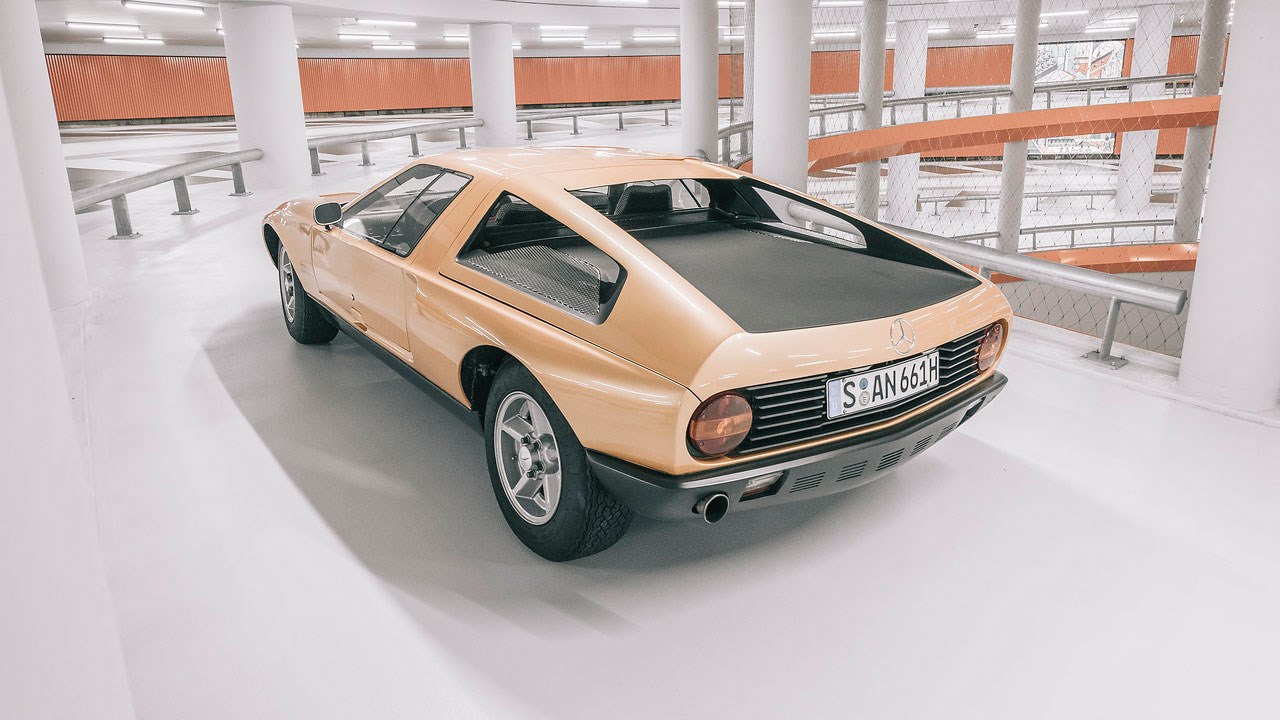
With its fibreglass-reinforced plastic body styled by Joseph Galitzendorfer, the C111 proposal took Mercedes design in a totally new and highly creative direction. Clean, elegant and aerodynamically efficient (with a drag coefficient of 0.33), the wildly expressionist styling – still beautiful and timeless – is surely proof that there was a considerable body of opinion within Mercedes that this car should be far more than a test laboratory.
A new take on the 300 SL
It was to be a modern 300 SL, a mid-engined gullwing supercar to rival Sant’Agata’s Lamborghini Miura in performance and appearance, and to combine these qualities with superior practicality and handling.
At 4440mm long, 1825mm wide and just 1120mm high, the Mercedes was also small – about the size of today’s Porsche 911, but with much shorter overhangs. Rudi Uhlenhaut, Mercedes’ great test development engineer, undoubtedly set out to build the world’s best sports car.
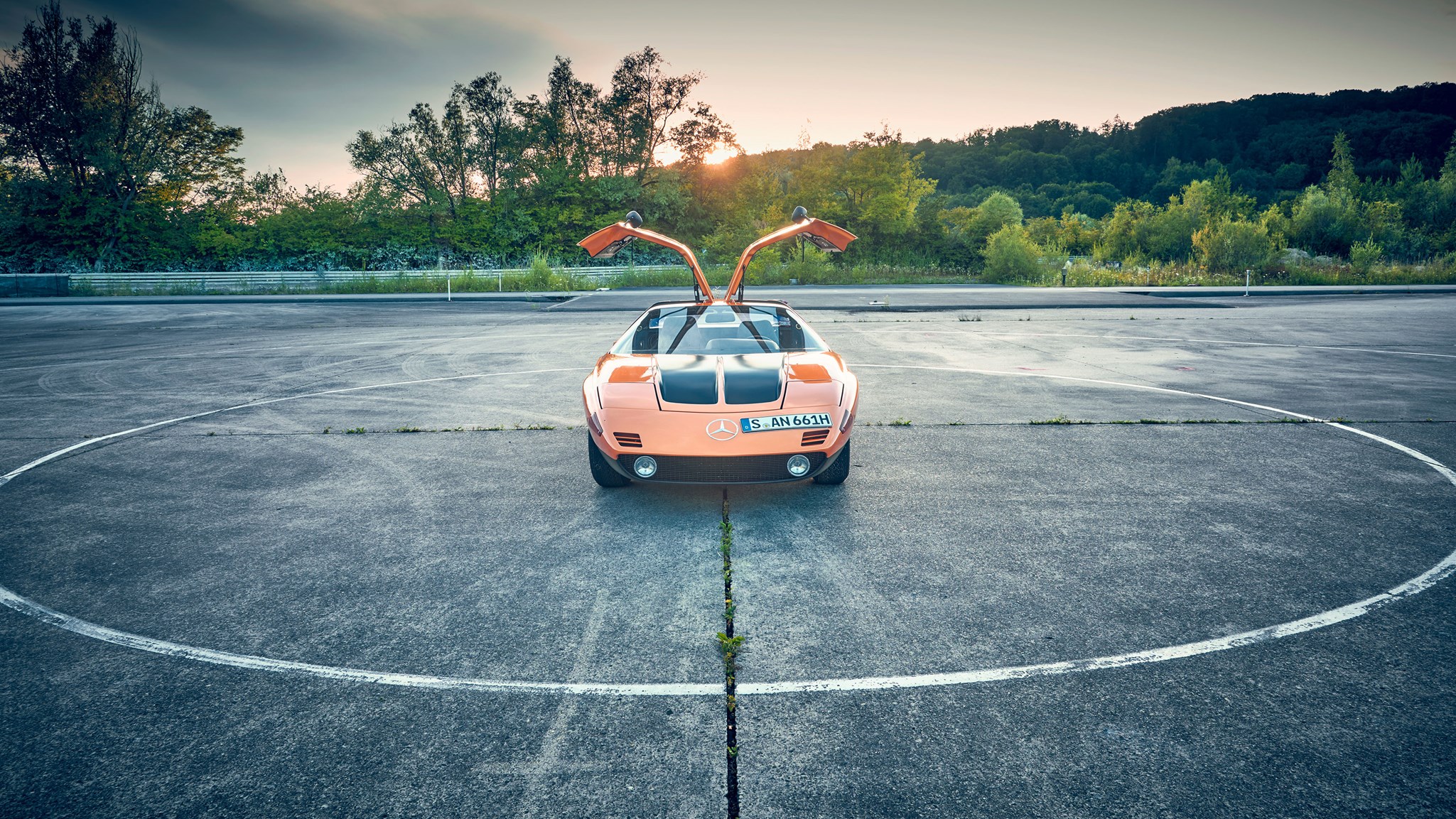
Customers and the press were impressed with the original 276bhp three-rotor car, but it was the 1970 version, with a 345bhp four-rotor engine, that brought a massive performance increase – the top speed climbed to 186mph while the 0-62mph time dropped to 4.8sec; brilliant numbers for the era. Combined with a lower waistline and larger windows, buttresses that sweep back from the reinforced roof, and gullwing doors that open to improve visibility, it had around 500 people queuing up, cheque books open, to order the car. But they were not enough; the numbers didn’t add up.
An initial run of 50 cars was hinted at by the motoring press. Eventually, in 1973, durability and thirst issues with the rotary engine, crash-test security with the gullwing doors (what if the car should roll?), difficulty with taller drivers getting in and out, and potential emission problems, saw the Mercedes board veto a production version, by a margin of just one vote. It was tried with diesel engines – imagine that, a diesel supercar in the early ’70s! – but that was not enough to get it the green light.
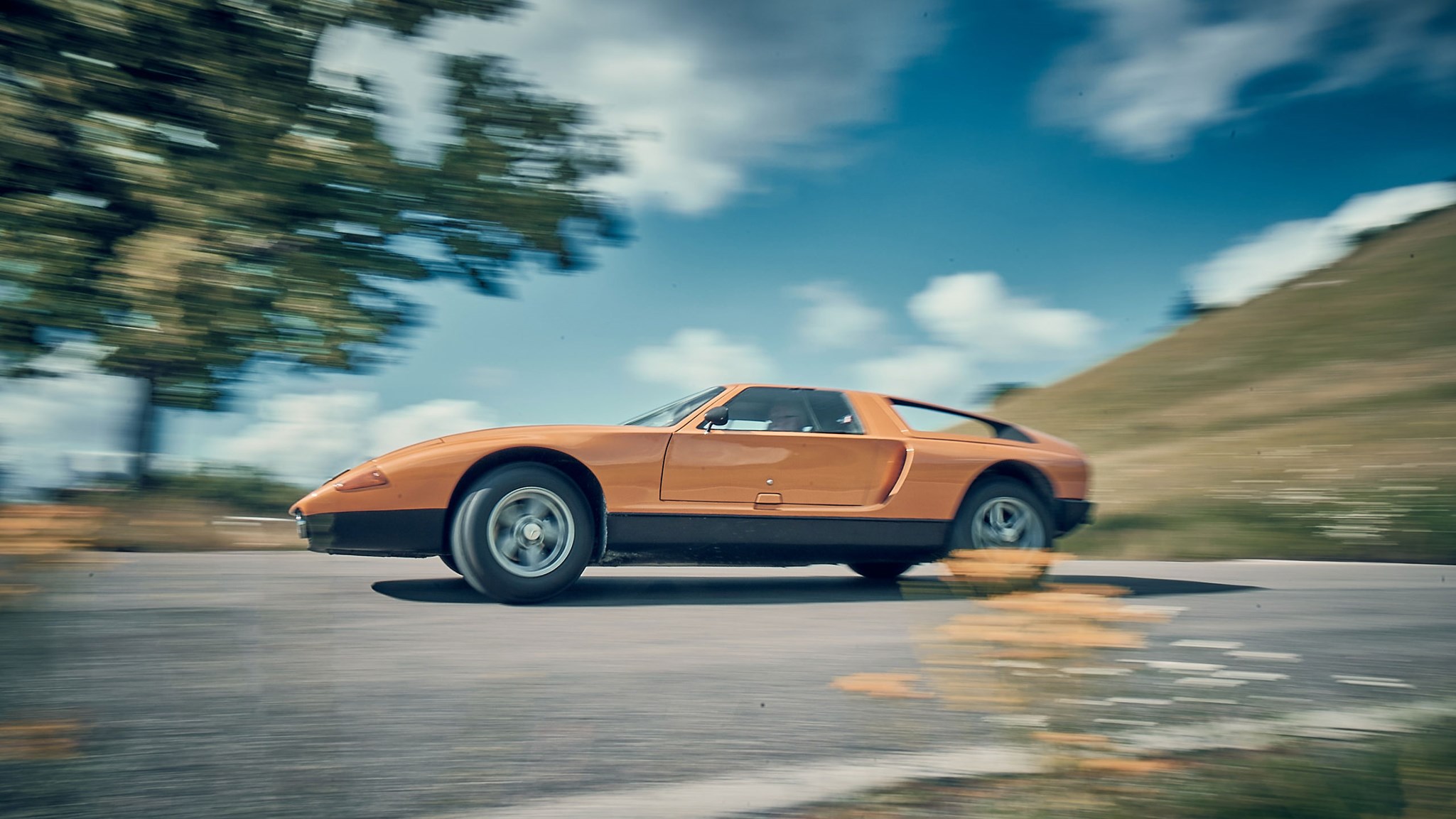
Driving the C111
Now, rain falling, I’m about to be trusted with the gorgeous C111 in Stuttgart’s dense traffic. I’ll be driving it in the Swabian Alps and at a Mercedes test track, too. My minders from the Mercedes- Benz Classic division insist that I should not hold back. Drive it like a modern car, they tell me. This car started life as a 1970 C111/II, with the four-rotor Wankel engine, but was later fitted with a petrol V8 from the period.
Compared with today’s supercars – with vents, ducts, wings, spoilers and splitters on every surface – the overall impression is precise, minimalist even, almost delicate. The blacked-out areas, uncluttered rear treatment with a blacked-out grille enhanced by simple round red tail lights, evoke understatement and design refinement. Only the high-profile (215/70 VR15) Michelin tyres and pop-up headlights betray its age.
Matthias Chwal, the mechanic who rebuilt the car when M-B Classic decided they wanted a reliable and fully functional roadgoing C111, opens the wide gullwing door for me, and warns me to watch my head on its lower edge. Once committed, you then have to slide across the expansive body sill, being careful to avoid the greasy door lock in the sill, and you find a perfect driving position.
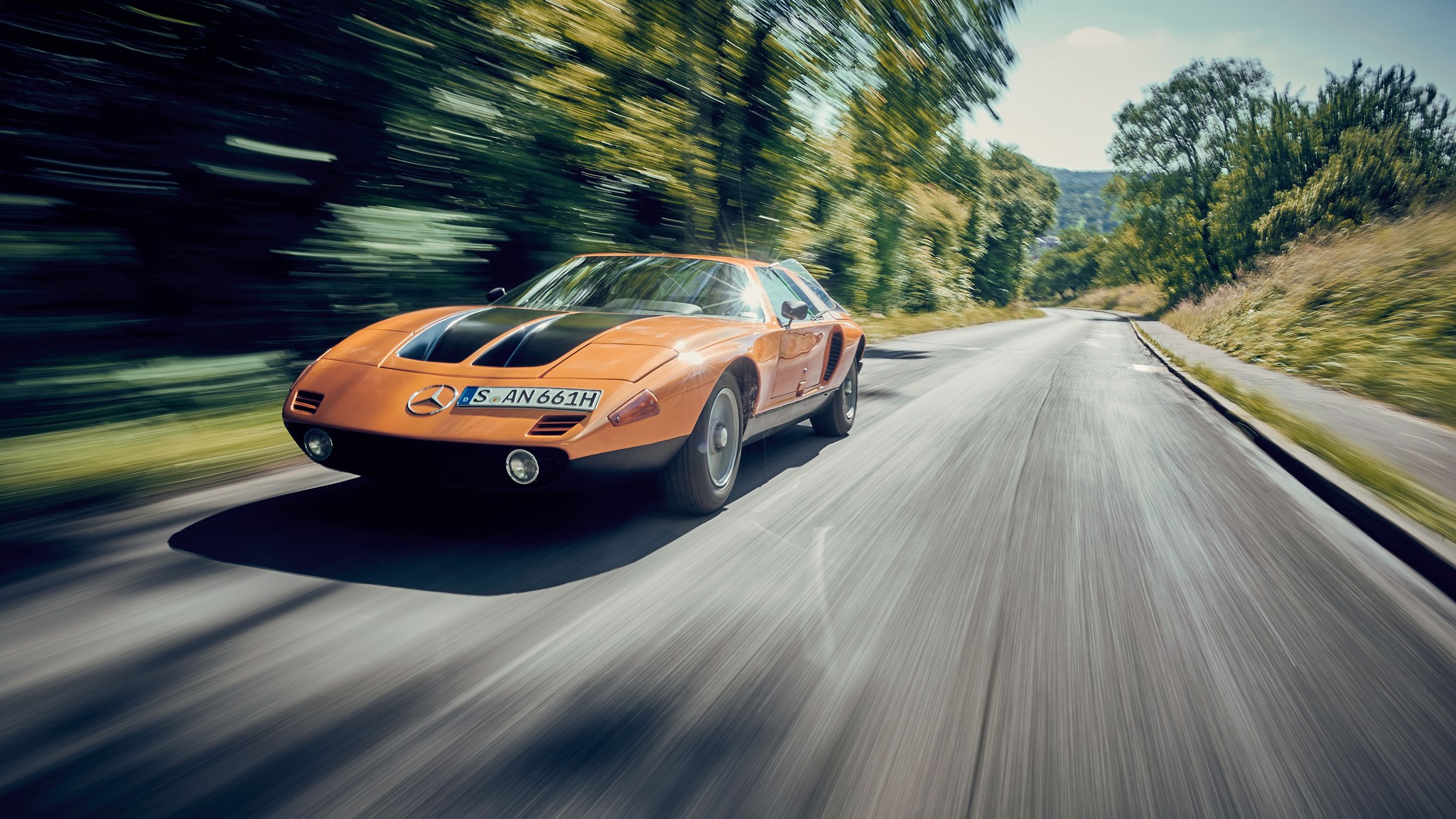
Long before the BMW M1 and Honda NSX, Mercedes created a user-friendly supercar. It is so much more practical than the Italian supercars of the era. They may be rare sights on the road, but not as rare as the C111. The fact that not one has ever been sold plays a big part in the Merc’s mystique.
The huge four-spoke black steering wheel is straight from the S-Class, pedals offset just a little to the left relative to the wheel. The dashboard (and the wheel), switchgear and controls are from production 1970 Mercedes cars, the fashionable houndstooth cloth buckets supportive and comfortable. The huge windshield is striking, providing exceptional forward visibility.
The windscreen’s leading edge reveals the telltale sign of one of the world’s first integrated radio antennas. The period V8 now installed to keep the car realistic was developed for the R107 350 SL. This once experimental prototype is kitted out as if ready to go into production, with a working historic and vertically installed Becker radio, air-conditioning and full set of gauges. Even the inside of the glovebox is finished, in leather.
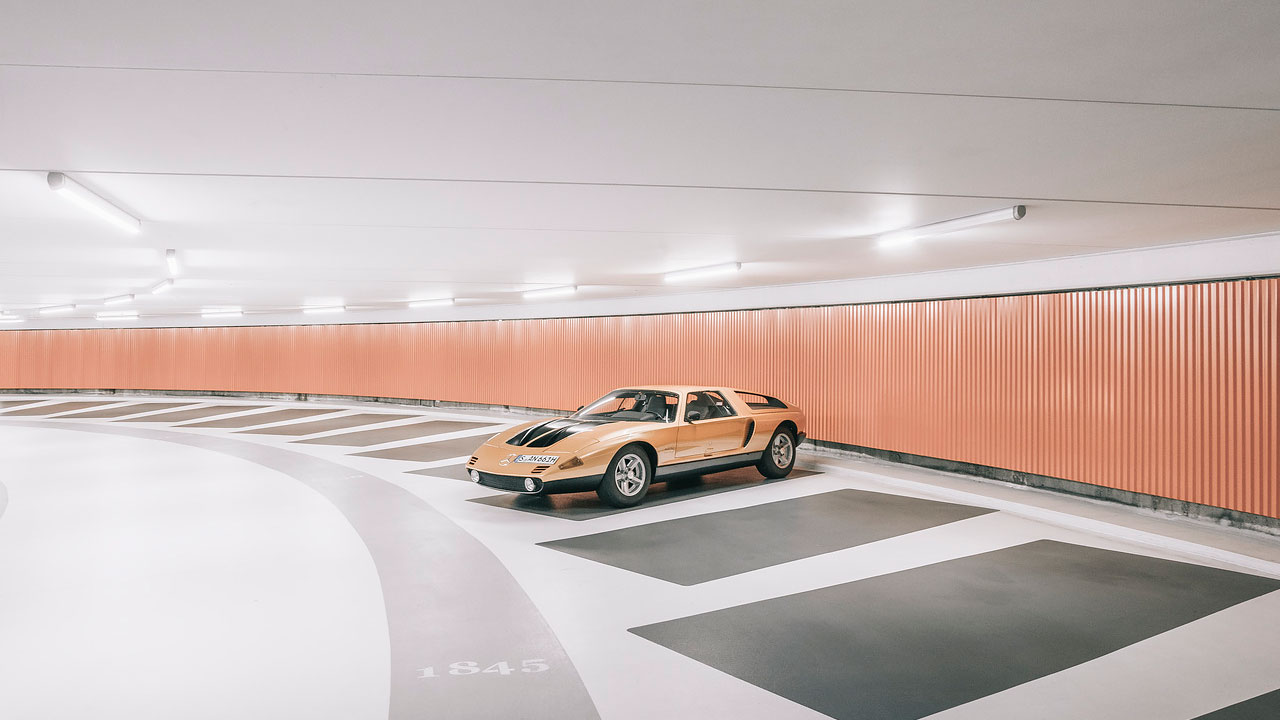
There’s a note stuck on the dash that suggests a 75mph maximum speed. After all, this C111 does spend most of its time in a museum, However, despite the car’s value, I’m told to ignore the note.
Turning the key and hearing that V8 fire is bliss. It’s a bit lumpy initially, but soon settles to an even rumble. The tacho’s crudely painted redline is at 6500rpm, though the numbers run up to 10,000rpm, an obvious indication it was intended for the Wankel rotary engine, which was governed to cut the fuel supply at 7500rpm.
To take off, you push a button on top of the gearlever to select the dogleg first gear (or reverse) on the ZF five-speed transaxle (as used in the DeLorean DMC-12). From second to fifth gears, the shift is via a standard H-pattern.
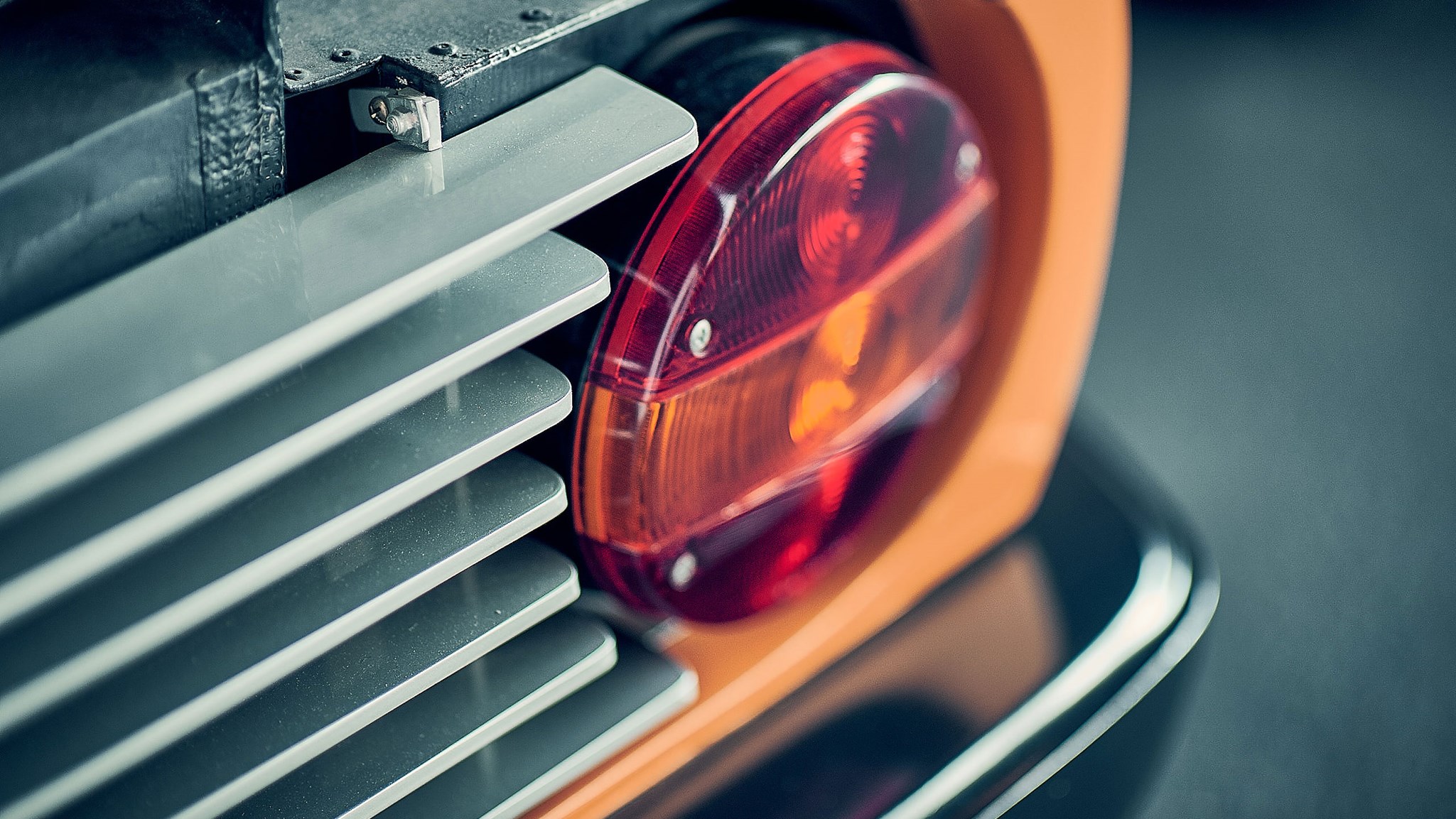
By modern standards, the C111 is brisk rather than fast, and needs plenty of revs to overcome a lack of low-end torque. Best to keep the eight in the 3500-5000rpm range, which means frequent use of the gearbox; you soon learn to deliberately hesitate for a brief but necessary moment as you change gears.
In four-rotor form, back in 1970, the C111 must have felt ridiculously fast. Yet the ride is beautifully composed and the new suspension’s anti-dive geometry, which would make it on to all production Mercedes cars, really works, though there is bodyroll in tight corners. The brakes, the same vented four-wheel discs developed for the heavyweight 300 SEL 6.3, are strong, progressive and reasonably weighted.
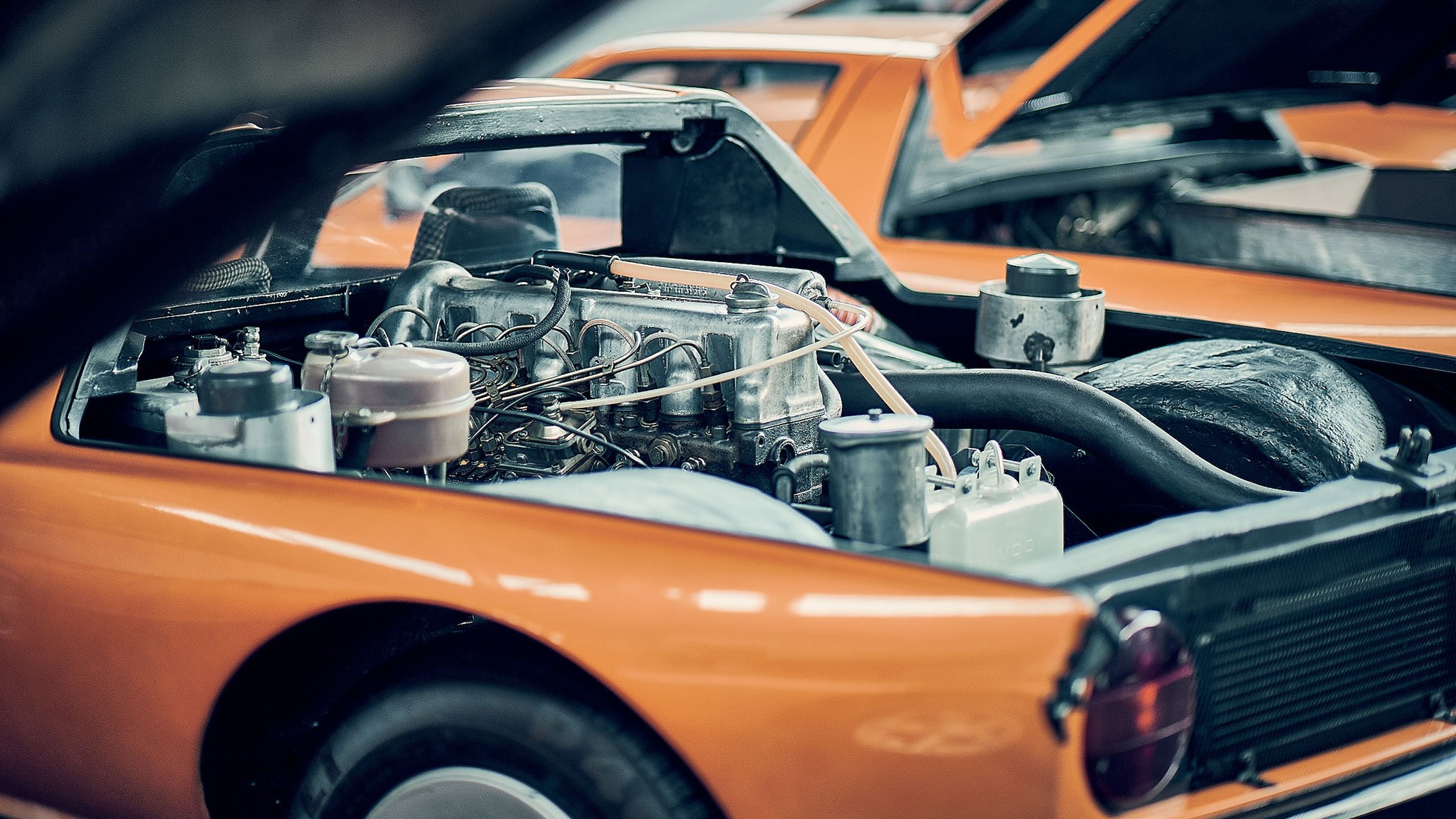
The one area where the C111 fails by contemporary standards is in its steering behaviour. At anything below about 25mph, the steering is so heavy it demands strong-arm tactics and still feels ponderous. At parking speeds it requires a massive effort to move the front wheels. The trait of quickly loading up as you turn the car into corners exaggerates the understeer because slow corners needed. And because there is nothing in the way of self-centring, the wheel must then be wound back to a straight-ahead position as you exit.
Two things here. First, it would have been easy for Mercedes to fit a production C111 with hydraulic power steering. Second, at 3.75 turns, the steering is far slower and less direct than modern cars. For the mid-engined supercar, Mercedes stayed true to its experience and fitted a traditional recirculating-ball system. No pinsharp rack-and-pinion system, then beginning to appear on most of its rivals, for the C111.
The transformation in the steering on winding country roads is both welcome and a real surprise. As the steering lightens it also feels far more direct and accurate at the straight-ahead. It even develops self-centring out of corners, the whole car coming alive, encouraging the driver to attack corners and straights. Yes, you can drive this car hard; as hard as you dare. Now it is light on its feet and even feels agile.
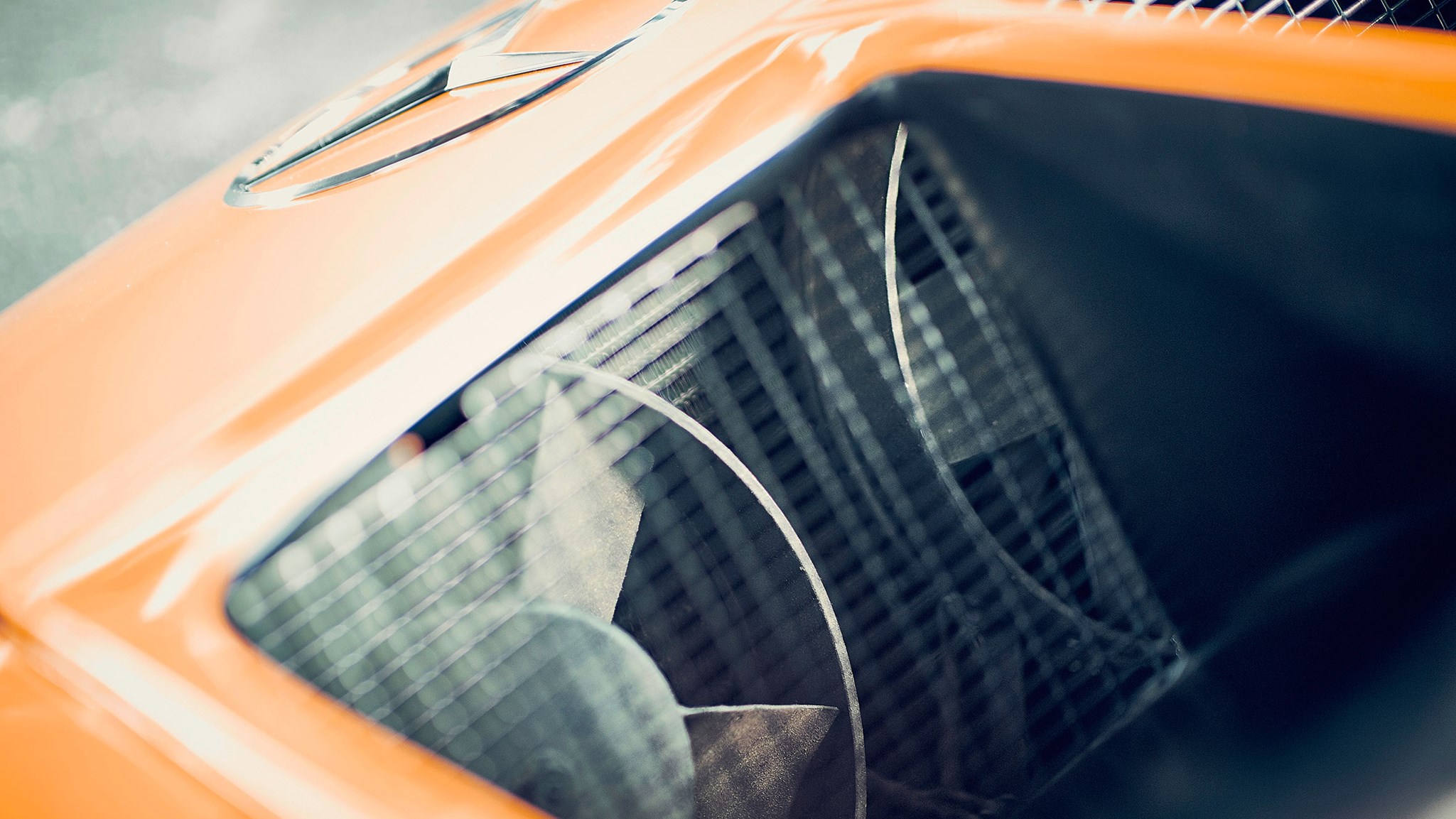
Stretching the V8 out to 6000rpm, I can’t believe my confidence levels – especially given its value – as I fling the Mercedes around, balancing its attitude on the throttle, the engine’s power flooding the rear wheels that, nominally, carry 55 per cent of the car’s weight. The whole car, so obviously thoroughly developed, displays all Mercedes’ accepted Fort Knox impregnability, its 1260kg feeling utterly self-assured and stable, with a sense of harmony and cohesion alien to its contemporary rivals.
From my enthralling day at the wheel, it’s clear the C111 was created by engineers who knew how to drive and understood what it took to make a car decently fast and immensely rewarding to drive, at least away from suburban speeds. A production C111 would have elevated supercar standards to an all-time high.
No doubt there was great relief in Modena when the Italians learned that Mercedes didn’t plan to produce C111s. At the time, Mercedes’ 3.5-litre V8 was not sufficiently powerful, and the brutal 6.3/6.9 V8 was simply too heavy if the car was to maintain the balance achieved with the compact, punchy Wankel.
As a result, through the troubled ’70s with its two energy crises, Mercedes ignored supercars and it wasn’t until more than a decade later, with BMW on the march, that Stuttgart dared to think of genuine high-performance sports cars.
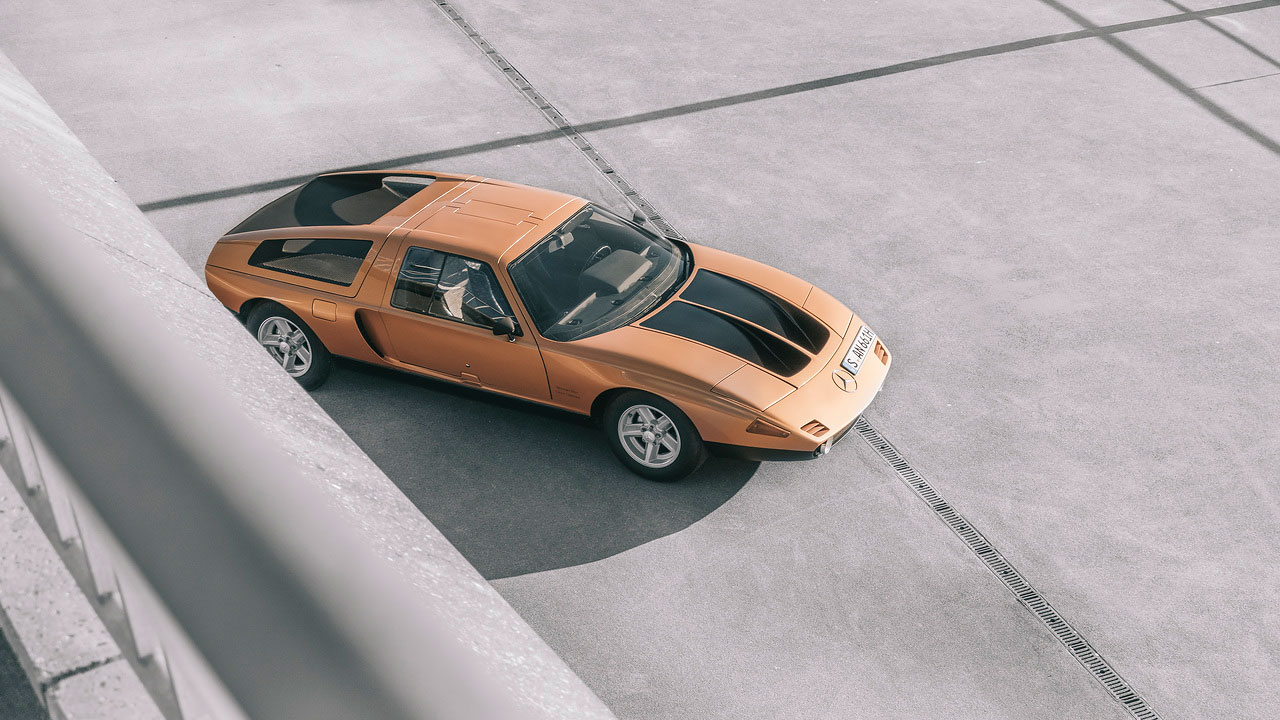
In 1991 Mercedes showed the mid-engine C112, effectively its answer to Jaguar’s XJ220, but the heavy-handed, almost ugly design was stillborn. It would be another decade before Benz returned to the supercar with the front-engined Mercedes SLR McLaren, supposedly inspired by the 300 SLR Uhlenhaut coupe. That proved to be a disappointment, not driving as well as it might have given the talent involved in its creation, nor selling well.
Then came the also gullwing SLS AMG and, in 2015, the AMG GT, each staking a claim to be the inheritor of Merc’s high-performance heritage, though without either displaying the engineering and design creativity of the exquisite C111.
I can appreciate and accept the reasons why Mercedes-Benz didn’t build the C111, but that doesn’t make it any less disappointing. Not when it looks so close to perfection – a car that should be mentioned in the same breath as the Lamborghini Miura and De Tomaso Mangusta, and revered for its game-changing innovations, rather than mourned as something that might have been.
Want to get all the intel first, and access more amazing content from CAR? Become a Subscriber of CAR here.